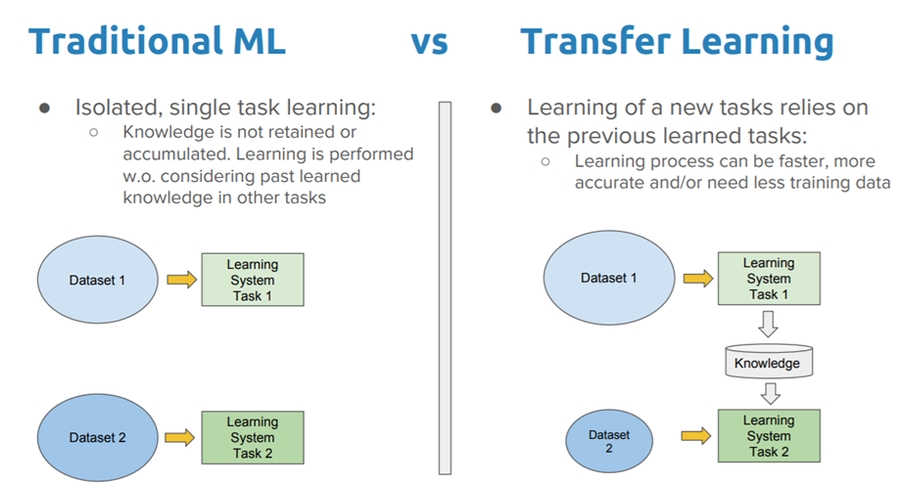🚙Transfer Learning
Applying a knowledge to separate tasks
In short: Learning from one task and applying knowledge to separate tasks 🛰🚙
❓ What is Transfer Learning?
🕵️♀️ Transfer learning is a machine learning technique where a model trained on one task is re-purposed on a second related task.
🌟 In addition, it is an optimization method that allows rapid progress or improved performance when modeling the second task.
🤸♀️ Transfer learning only works in deep learning if the model features learned from the first task are general.
Long story short: Rather than training a neural network from scratch we can instead download an open-source model that someone else has already trained on a huge dataset maybe for weeks and use these parameters as a starting point to train our model just a little bit more with the smaller dataset that we have ✨
💫 Traditional ML vs Transfer Learning
🙄 Problem
Layers in a neural network can sometimes end up having similar weights and possible impact each other leading to over-fitting. With a big complex model it's a risk. So if you can imagine the dense layers can look a little bit like this.
We can drop out some neurons that has similar weights with neighbors, so that overfitting is being removed.
🔃 Comparison
🤸♀️ An NN before and after dropout
✨ Accuracy before and after dropout
🤔 When is it practical?
It is practical when we have a lot of data for problem that we are transferring from and usually relatively less data for the problem we are transferring to 🕵️
More accurately:
For task A to task B, it is sensible to do transfer learning from A to B when:
🚩 Task A and task B have the same output x
⭐ We have a lot more data for
task Athantask B🔎 Low level features from
task Acould be helpful for learningtask B
🧐 References
Last updated
Was this helpful?
